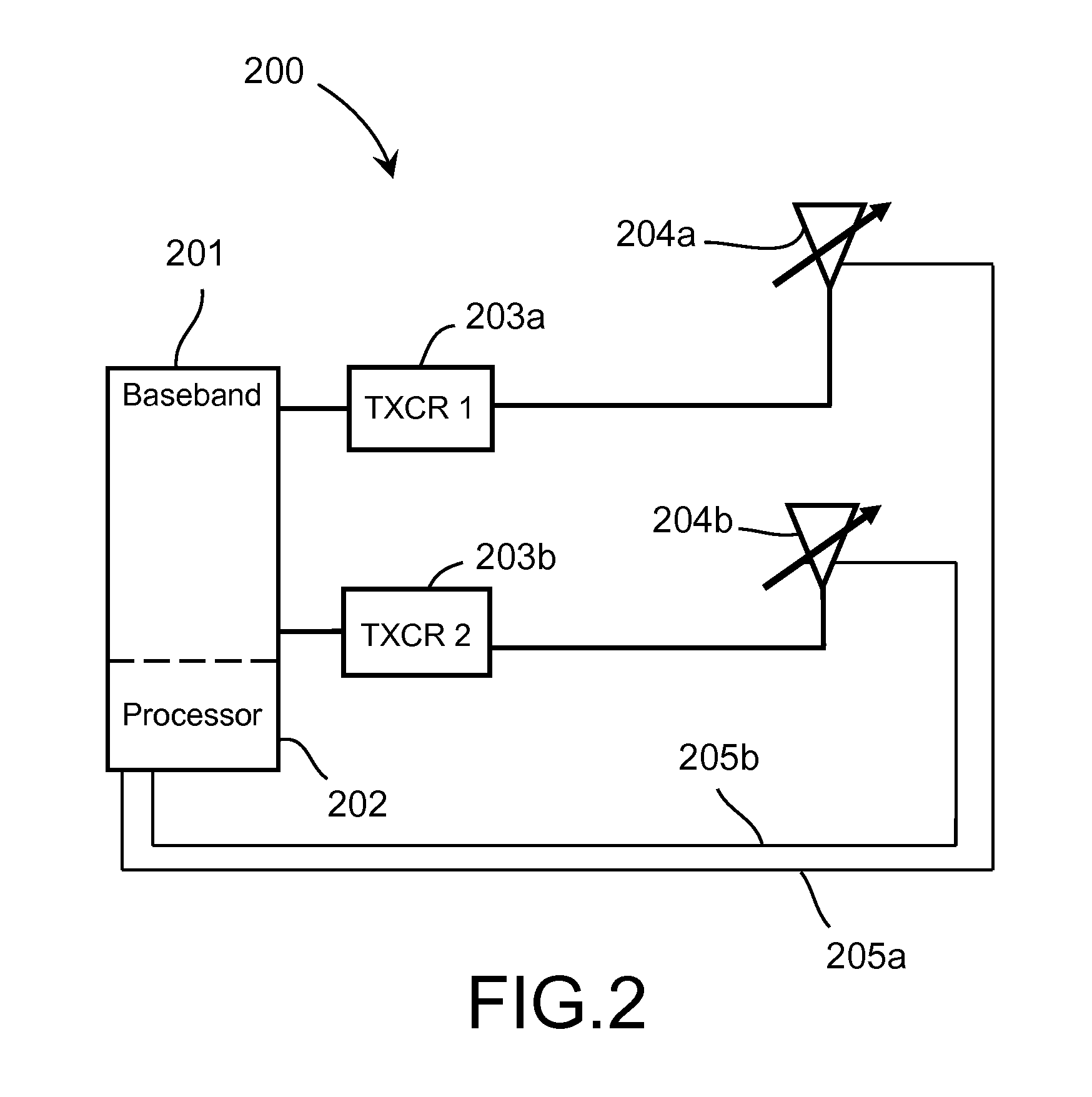Antenna system optimized for siso and MIMO operation
a technology of siso and mimo, applied in the field of wireless communication, can solve the problems of interference at the receiving antenna, degradation of device performance, and blockage of the line of sight between the transmitter and the receiver involved in the communication,
- Summary
- Abstract
- Description
- Claims
- Application Information
AI Technical Summary
Benefits of technology
Problems solved by technology
Method used
Image
Examples
Embodiment Construction
[0031]Commonly owned U.S. Pat. Nos. 7,830,320 and 7,911,402 describe antennas and methods for active band switching and a beam steering technique, respectively, wherein a single antenna is capable of generating multiple radiating modes; the contents of which are incorporated by reference. These antennas being capable of generating multiple antenna radiation modes are herein referred to as “modal antennas”. These band switching (frequency shifting) and beam steering techniques are effectuated with the use of offset parasitic elements strategically disposed adjacent to the antenna radiator and adapted to alter the current distribution on the driven antenna as the reactive load on the parasitic is varied.
[0032]One application identified for this technique includes a novel receive diversity technique described in U.S. patent application Ser. No. 13 / 227,361, filed Sep. 07, 2011, titled “MODAL ANTENNA WITH CORRELATION MANAGEMENT FOR DIVERSITY APPLICATIONS”, wherein a single modal antenna ...
PUM
 Login to View More
Login to View More Abstract
Description
Claims
Application Information
 Login to View More
Login to View More - R&D
- Intellectual Property
- Life Sciences
- Materials
- Tech Scout
- Unparalleled Data Quality
- Higher Quality Content
- 60% Fewer Hallucinations
Browse by: Latest US Patents, China's latest patents, Technical Efficacy Thesaurus, Application Domain, Technology Topic, Popular Technical Reports.
© 2025 PatSnap. All rights reserved.Legal|Privacy policy|Modern Slavery Act Transparency Statement|Sitemap|About US| Contact US: help@patsnap.com



